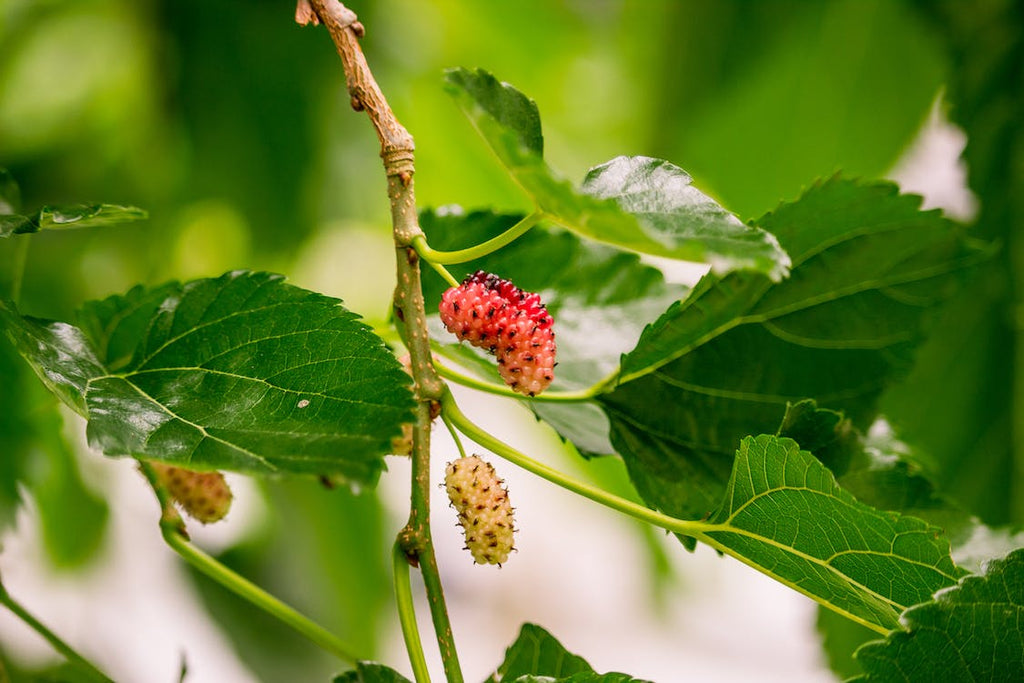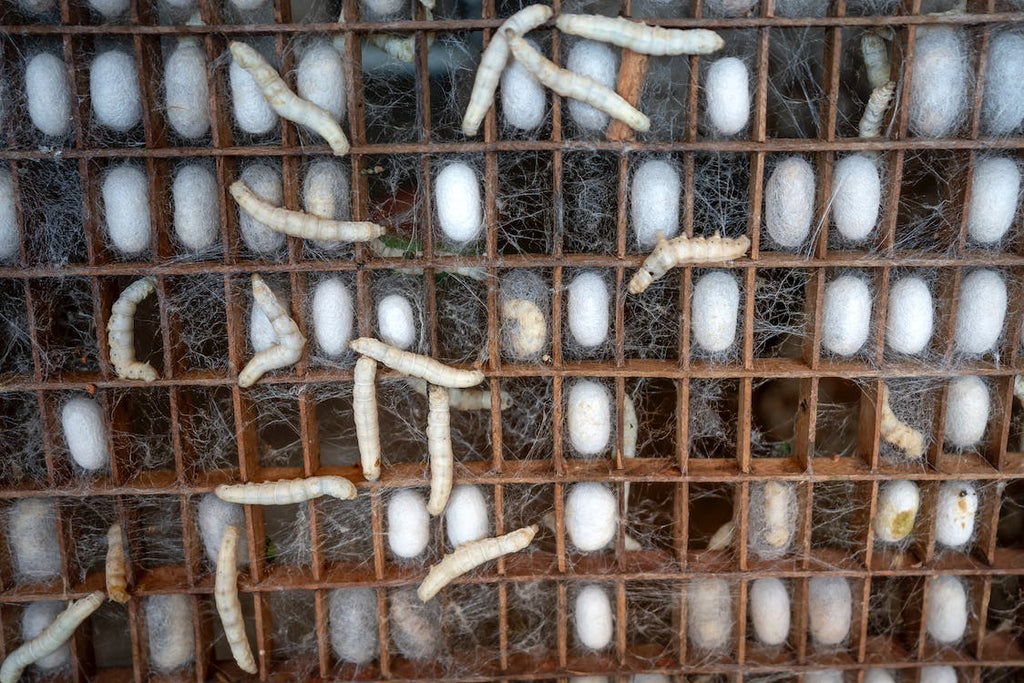
In many parts of the US and Canada, mulberry trees are a common sight both in gardens and growing wild. Mulberry trees are a contentious issue—in some parts of the country they’re a welcome garden feature, while in others they’re considered an invasive species and legally prohibited. As we dug into the wheres, whys, and hows of growing mulberry trees at home, we unearthed a surprisingly complex history around mulberry trees and mulberry cultivation in North America. There’s a lot to consider before planting mulberry trees in your garden as either an ornamental or a fruit tree, so let’s dig in and learn a bit more about the remarkable mulberry tree!
Members of the Moracea family, mulberry trees are all members of the genus Morus. While there are more than 60 recognized members of this genus, there are only three that are in general cultivation. These, conveniently, are named after the predominant color of their fruit:
- Morus alba, commonly known as “white mulberry”, “silkworm mulberry”, or occasionally by its Chinese name “sāngshù/桑树), is the most famous member of the mulberry family. As the popular names suggest, these are the mulberry trees used to feed silkworms, who in turn produce silk. A native of East Asia, alba has been introduced to many places in North America and around the world and may be considered an invasive. With leaves up to 12 inches/30cm long and a potential height of 33-67 feet/10-20 meters, M. alba can be quite a large tree for a garden. While M. alba does produce fruit, the flavor is generally fairly bland.
- Morus rubra, aka “red mulberry” or very occasionally “American mulberry” is a North American native. While it is still common in the US, rubra is listed as an endangered species in Canada. Growing 35-50 feet/10-15 meters in height, it is a small to medium tree that adapts well to many different spaces. M. rubra produces relatively small leaves (3-7 inches/7-18cm) and small, flavorful fruit.

- Morus nigra, “black mulberry” is a tree of uncertain origin. The best theories have it emerging in the Middle East or Iran, where it was cultivated as a fruit tree. While nigra can generally doesn’t get very tall—40 feet/12 meters or so—it does grow quite wide (50 feet/15 meters) with a correspondingly large root structure. Care must be taken in planting M. nigra, as if it grows too close to a house, driveway, or other structure the roots may cause damage!
As we’ve mentioned, red mulberry is a North American native, with a native range from Ontario to Florida and west to the Dakotas. The other two species are not from this continent—so how did they get here? This is where the story gets interesting: M. alba makes its first documented appearance in the Americas in 1621, when English settlers in the colony of Virginia imported some trees from China in the hopes of starting a silk industry. While commercial silk production never took off, the trees thrived and spread rapidly, hybridizing with the native M. rubra and crowding them out in many places. M. nigra appears later, having been introduced as both a decorative garden plant and as another attempt at a silk industry in the late 19th century. Fun fact: in parts of the American Southeast to this day there are small populations of wild silkworms left over from the silk producing days!

So now that we’ve explored a bit of mulberry history and science, let’s address our central question: should you plant mulberry trees in your garden? The answer is a firm “maybe”; there are a few things to consider before putting a mulberry tree or trees into your garden space. Since some varieties of mulberry may be considered invasive in some places, checking your local laws is a must before planting mulberry trees. Your local garden center, garden club, or county extension might be able to help you find the information you need about the legalities and logistics of growing mulberry, so as always we recommend talking to them first. The North American native M. rubra is a much safer choice, and is a smaller and more manageable tree with tastier fruits. As a native, it also provides better support for local wildlife and will attract many, many birds to your garden. While that’s overall a good thing—a bird friendly garden is a real joy—it does create some additional things to think about. Specifically : do not plant a mulberry tree near the place you park your car outside! That aside, M. rubra can provide a beautiful accent piece or point of interest in your landscaping in addition to its culinary and wildlife uses. It’s an interesting tree and grows quickly to fill in spaces in your lawn or garden.
One final consideration with mulberry is controlling them. Mulberry fruit quickly grow into seedlings and then small trees, so regular mowing around your mulberry tree and vigilance to ensure that its children aren’t taking over other parts of your lawn or garden are both musts. Mulberry are fairly resistant to pests and disease, so they will spread quickly if left unchecked. On the plus side: your established, intentionally planted trees will require minimum maintenance beyond occasional pruning.
Mulberry trees are fascinating things, with long, rich histories and many potential uses in your garden. By carefully choosing the right variety of mulberry tree, planting it in the right place, and caring for it appropriately you’ll create a lovely garden feature or landscaping point of interest that will give you joy for many years to come!

Leave a comment